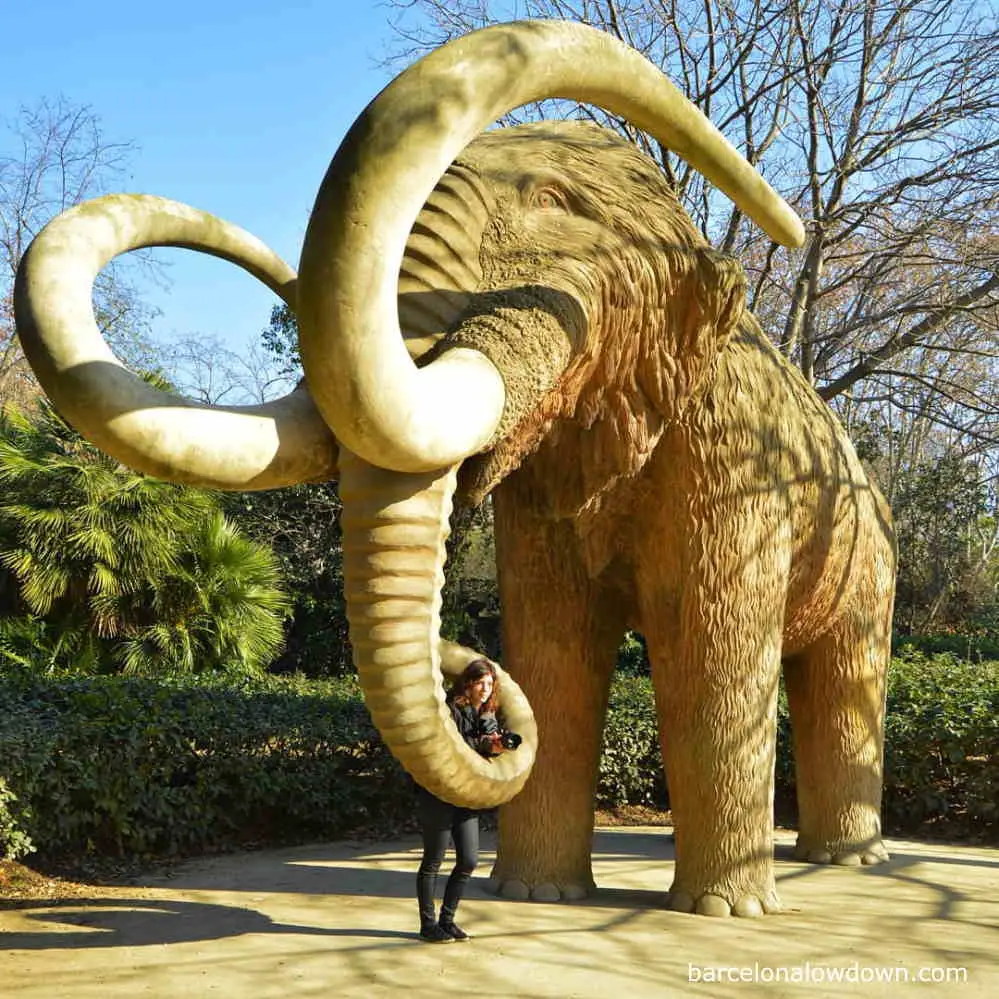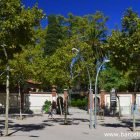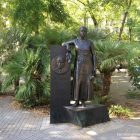The Parc de la Ciutadella is Barcelona’s oldest and most central public park. Located on the edge of the old town, the park dates back to 1869 when the eighteenth-century citadel, which had previously occupied the site, was handed over to the city council.
Home to Barcelona Zoo, the Catalan Houses of Parliament, a small boating lake and a large collection of statues, the park is often compared to an open-air museum or art gallery.
One of the park’s best known and most photographed monuments is Júlia, a life-size woolly mammoth statue that has stood amongst the trees and bushes for more than a hundred years. The statue is so well known that, at the weekend, it’s not uncommon to see queues of children and their parents lining up to have their photo taken sitting on the mammoth’s trunk.

History of Barcelona’s Woolly Mammoth Sculpture
The Park de la Ciutadella was built for the Universal Exposition of 1888. The park was designed by architect Josep Fontserre who took inspiration from the ornamental parks and gardens, which were fashionable at the time in France, England and Italy.
The festival site extended as far as the Mercat del Born and included a funfair and steam railway. Several buildings built for the Expo can still be seen today, including the Arc de Triomf, El Castell dels Tres Dragons, the Hibernaculum, and the Monumental Fountain which was designed, in part, by Antoni Gaudí.
After the Expo was over, Catalan geologist Norbert Font i Saqué had the idea of converting the park into a zoo for extinct animals. Font’s plan was to install a collection of life-sized replicas of dinosaurs and other prehistoric animals that had once lived in the area.
The first and only statue built was Júlia, a concrete replica of a woolly mammoth that was inaugurated in 1906. But, unfortunately, the project went ahead slowly and, after the geologist’s death in 1910, none of the other figures was ever built.
Despite the apparent lack of success of Norbert Font’s plan, the giant mammoth statue soon became one of the park’s most popular attractions.
To this day, more than a century later, children of all ages can be seen clambering on the trunk of the statue. Most people I know who grew up in Barcelona have photos of themselves when they were children playing with Júlia the mammoth.

Why is the Mammoth Statue in the Parc de la Ciutadella Called Júlia?
In 1915 the Sultan of Morocco gave an elephant called Júlia to Barcelona Zoo. The elephant was a big hit with the children of Barcelona and, after her death in the 1960s, people started calling the mammoth statue Júlia in her memory. [source]
Check out my Barcelona with kids guide.
Location
Júlia, the concrete mammoth statue, stands among the trees and bushes near the boating lake in the Parc de la Ciutadella (English: Citadel Park).
How to get there
The nearest metro stations are Arc de Triomf on the red line (L1) and Jaume I and Ciutadella – Via Olímpica on the yellow line (L4).
Tram T4 also stops nearby (nearest stop: Wellington).
Other attractions nearby
Parc de la Ciutadella Fountain
Barcelona Zoo
Arc de Triomf
The Born Cultural and Memorial Centre
The Picasso Museum
Map
Parc de la Ciutadella, Passeig de Picasso, 21, Barcelona




